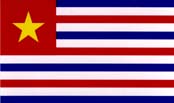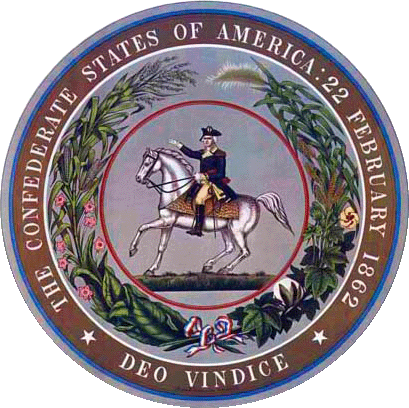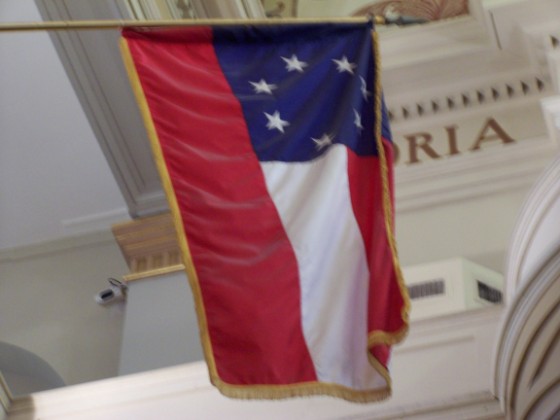
|
Louisiana Secedes from the Union and becomes the 6th original state of the Confederate States of America |
|
|
|
|
|
Contents
1) Louisiana Secedes from Union - January 29, 18612) Symbols and Flags of Louisiana and the Confederate States of America
3) Secession Order of the Confederate States of America
Louisiana Secedes from Union - January 29, 1861
|
Ordinance of Secession of Louisiana |
|
AN ORDINANCE
We, the people of the State of Louisiana, in Convention assembled, do declare and ordain, and it is hereby declared and ordained, That the ordinance passed by us in Convention on the 22d day of November, in the year eighteen hundred and eleven, whereby the Constitution of the United States of America and the amendments of the said Constitution were adopted; and all laws and ordinances by which the State of Louisiana became a member of the Federal Union, be and the same are hereby repealed and abrogated; and that the union now subsisting between Louisiana and other States, under the name of "The United States of America" is hereby dissolved. We do further declare and ordain, That the State of Louisiana hereby resumes all rights and powers heretofore delegated to the Government of the United States of America; that her citizens are absolved from all allegiance to said Government; and that she is in full possession and exercise of all those rights of sovereignty which appertain to a free and independent State. We do further declare and ordain, That all rights acquired and vested under the Constitution of the United States, or any act of Congress, or treaty, or under any law of this State, and not incompatible with this ordinance, shall remain in force, and have the same effect as if this ordinance had not been passed. Adopted in Convention at Baton Rouge the 26th of January, 1861.
|
Being the seventh state to leave the union, the state of Louisiana joined the first six states on January 21, 1861. Although the aristocrats, wealthy land owners and planters were almost unanamously in agreement to defend Louisiana against the onset of invasion by the United States of America Union forces, the war quickly became known as "a rich man's war and a poor man's fight".
At the onset of the war the Acadian French in Louisiana were generally known as circulating around the poorer classes of farmers, share croppers, skilled laborers and land workers. Their population were more concerned for their day to day lives and the protection of their family and loved ones. The general population of Acadian French in Louisiana viewed both the Union, and Confederate, powers as outside governmental forces. They did not wish their culture to be sacrificed and absorbed into an ambiguous assimilated "Anglais" culture. They resisted this assimilation, preferring to remain "neutral", much as they resisted the British assimilation attempts that had been attempted in Nova Scotia (l'Acadie) more than a hundred years before.
During the deportation of 1755, the British regarded the "French Neutral Acadians" much as they did the colonial slave culture. In many of the 13 colonies, the Acadians were restricted to community areas seperate from the English and if caught outside these areas, were swiftly punished and imprisoned. At the onset of the Civil War, the majority of the Acadian population not only did not own slaves, but often worked for the aristocratic planters which put them working side by side with the slave population.
Listening to the Confederate government propaganda, the Acadian population in Louisiana, at first, viewed the war as "the Northern war" (la guerre du Nord). After many of the attempts of the Confederate government to build and maintain a sizable defense force, including a statewide draft, the Acadians began viewing the war as "the American War" (la guerre de les americains). This says much about their struggle to remain seperate and preserve their seperate culture and way of life. When Union forces began arriving in the bayou and swamp areas of southern Louisiana, they met with regular Confederate government resistence, strengthened by Acadians who had answered to the state draft and local militia forces attempting to protect their precious bayou life, families and loved ones.
Caught between their cultural history, desire to remain "neutral" and allegence to their beloved "Louisiane", many Acadian families found themselves to be pawned against each other, much as many families throughout all areas of nation did. The Acadians found themselves devastatingly caught in the middle of the conflict.
There are a few Acadians who answered to the state call of duty and gave all to defend Louisiane. One of the most known and notable Acadian Confederate heroes is Confederate General Alfred Mouton. Jean Jacques Alfred Mouton was born in 1829 in Opelousas, Louisiana, the son of Alexandre Mouton, a governor, senator and president of the Louisiana Secession Convention. His was one of the pioneer Acadian families to settle in the Lafayette area during Colonial times. He attended West Point and graduated just after the end of the Mexican War, so he resigned from the U.S. Army to manage his family plantation. In 1856 he was appointed a brigadier general in the state militia and led a vigilante committee against outlaws and thieves. With the outbreak of the War for Southern Independence, he became colonel of the 18th Louisiana Infantry Regiment and was wounded on the second day of the Battle fo Shiloh. Promoted to brigadier general, he led a brigade at the battles of Bisland and Irish Bend 12-14 April 1862. Mouton was killed in action on 8 April 1864 while leading a charge that shattered the Union right at the Battle of Mansfield.
Symbols and Flags of Louisiana and the Confederate States of America
|
"The flags of the Confederate States of America were very important and a matter of great pride to those citizens living in the Confederacy. They are also a matter of great pride for their descendants as part of their heritage and history." - Winston Churchill |

|
At the time of Louisiana's secession from the Union, Louisiana adopted a state flag referred to as the |
|
|
Battle Flag of Confederate Louisiana |

|
|
|

|
|
|
Color Meaning in the Flags of the Confederacyby Monica Patrick |
||
|
The Confederate flag today was the last of four flags flown by the Confederacy. While design of the flags changed, each flag used the same colors as the American flag: red, white and blue. This decision is credited to Southern Gen. Pierre Gustave Toutant Beauregard. The Confederate flag in all its designs flew from 1861 to 1865, first flying in South Carolina. The original flag was known as the "Stars and Bars." The square flag had seven stars representing the seven states that seceded from the United States. But the most-recognized flag of the era is what is known as the "Confederate Navy Jack." RedWhile the meaning of the color red in the Confederate flags remained the same, the size and usage of the color changed throughout its transformations. Red represented the valor of the Confederacy. As in the case of the original United States flag, it represented hardiness and the willingness to sacrifice. Red was used as a background of the most popular flag, the "Navy Jack." Other flags showed white as the background. WhiteIn the language of flags, white represents purity. Innocence of ideas is what is attempted to be represented by using white. Some Christians also attribute the usage of white in a flag as sign of the represented country's allegiance to God and his son. Blue
StarsBeauregard added one star to the Confederate flag for each of the states in the Confederacy. The first seven stars represented belonged to South Carolina, Mississippi, Florida, Alabama, Georgia, Louisiana and Texas. After the Battle of Fort Sumter, stars were added for Virginia, Arkansas, North Carolina and Tennessee. There were eventually 11 stars. CrossWhat looks like an X on the "Confederate Jack" is actually the cross of Saint Andrew. Andrew was the first disciple of Jesus who later in life became a martyr. When the Roman government set about his crucifixion, Andrew protested. It is reported he asked to be crucified in the form of the X as he didn't feel worthy to die in the same manner of Jesus. The Confederate leadership apparently felt inspired by Andrew's fortitude and adopted his cross into their flag. Source: Monica Patrick: Gulf Coast writer, Monica Patrick has been writing social and cultural articles for over ten years. Her articles have appeared in "Reader's Digest" and local papers "Lagniappe" and the "Mobile Register". Monica received the Rising Star Award for her stellar online content. She attended the University of South Alabama majoring in ancient history. |
||
Secession Order of the Confederate States of America
| 20 Dec 1860 | South Carolina declares secession. | 9 Jan 1861 | Mississippi declares secession. | 10 Jan 1861 | Florida declares secession. | 11 Jan 1861 | Alabama declares secession. | 19 Jan 1861 | Georgia declares secession. | 26 Jan 1861 | Louisiana declares secession. | 4 Feb 1861 | Congress of the secessionist states convenes in Montgomery, Alabama. | 8 Feb 1861 | Confederate States of America founded by South Carolina, Alabama, Georgia, Florida, Mississippi, and Louisiana. |
| 5 Mar 1861 | seccession of Texas |
sources:
U.S. War Department
War of the Rebellion: Official Records of the Union and Confederate Armies
130 vols.; Washington, D.C., 1880-1901
U.S. Navy Department
War of the Rebellion: Official Records of the Union and Confederate Navies
30 vols.; Washington, D.C., 1894-1922
E. Taylor, "Discontent in Confederate Louisiana," Louisiana History, II, No. 4 (Fall, 1961), 424-425.
Copyright © 2010 - All Rights Reserved - Louisiane Acadien / Acadian Melancon
Template by OS Templates
 yahoo.com
yahoo.com